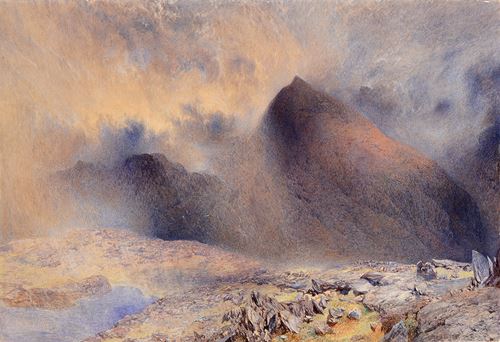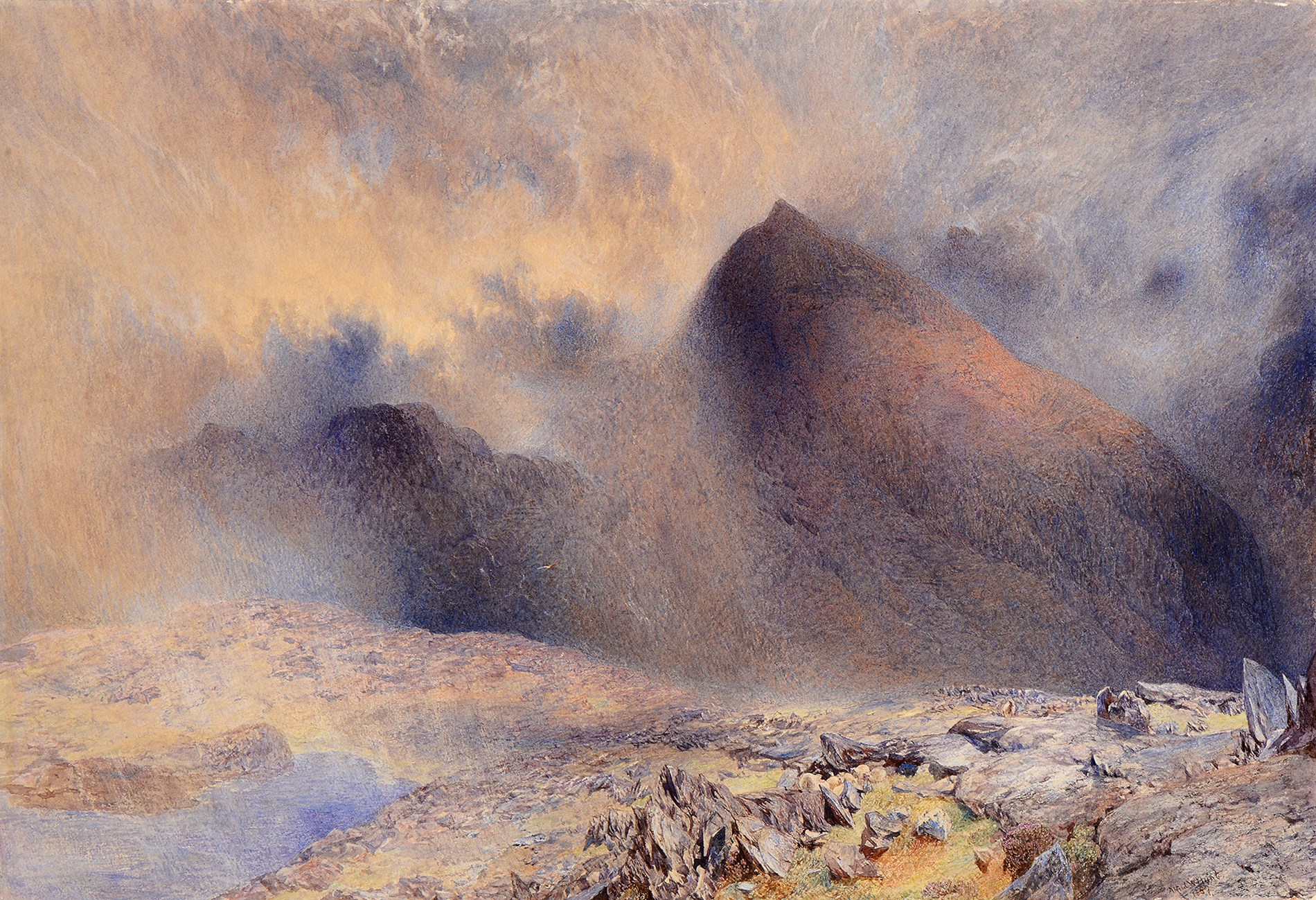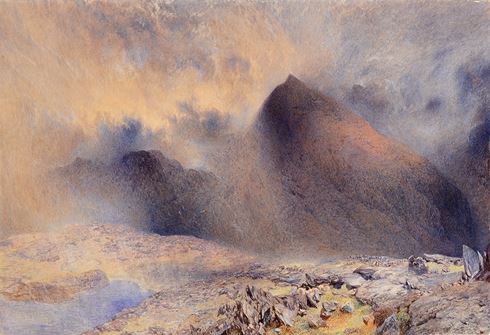
Alfred William HUNT
Liverpool 1830 - London 1896
Biography
Born and raised in Liverpool, Alfred William Hunt studied classics at Oxford and became a Fellow of Corpus Christi College. His early work as a watercolourist was influenced by the example of David Cox, who was a friend of his father, the Liverpool landscape painter Andrew Hunt. From 1856 he was a member of the Liverpool Academy, where he exhibited until 1864, when he joined the Old Water-Colour Society in London. In 1861 he resigned his Fellowship at Corpus Christi to marry and embark on an artistic career. For the next few years he lived in Durham, moving to London in 1865. In later years, his favourite sites for painting were in Yorkshire, Northumberland and around Durham, and he also made sketching tours in Germany and Switzerland – often tracing Turner’s earlier visits to these areas – as well as Scotland and the Lake District.
Hunt preferred, as much as possible, to work on the spot, producing numerous sketches and colour studies that would be worked up into finished watercolours and paintings in the studio. (More than two hundred of the artist’s sketchbooks are today in the collection of the Ashmolean Museum in Oxford.) Like many artists coming of age in the 1850’s, Hunt was profoundly influenced by reading John Ruskin’s Modern Painters, and one modern scholar has aptly described him as ‘perhaps the quintessential artist of the Ruskinian moment in Victorian painting.’ Hunt and Ruskin were to enjoy a friendship from the mid 1850’s onwards, with Ruskin often praising the works which Hunt exhibited, although he was also at times quite critical of the artist’s precise technique.
The other great influence on Hunt was J. M. W. Turner, whose watercolour style, at least in his more finished work, the younger artist attempted to emulate. (In 1857, the date of the present sheet, Ruskin curated an exhibition of Turner’s watercolours at the National Gallery, which Hunt is likely to have seen.) As the critic F. G. Stephens wrote of him in 1884, ‘Mr. Hunt is a true artist of Turner’s school, in fact the legitimate successor of Turner, but, except in strenuously and subtly endeavouring to delineate the effects of light, not his imitator.’ More recently, Andrew Wilton has noted that ‘there is considerable variety in Hunt’s work, and a lifelong dialogue with the protean Turner...his watercolour style is founded on the meticulous hatching and scrubbing that characterises Turner’s finished work in that medium, and rarely attempts the sort of breadth that he could not quite countenance in his admired Cox’s late work...His watercolour is usually enriched with bodycolour and gum, varied with scraping and scratching-out and, especially later on, subjected to a thorough surface-rubbing that half-veils the scenery in hazy light...These pictures are so rich that each one rewards detailed scrutiny, just as Ruskin demanded.’
Hunt’s watercolours are characterized by an abiding interest in intense colour and luminosity, allied with a meticulous technique and an insistence of working on the spot as much as possible. Although the minute detail and precise technique of his work was sometimes criticized by Ruskin as being too laboured, Hunt seems to have largely ignored the latter’s comments. Most critics admired the delicate technique, subtle tonality and brilliant effects of Hunt’s exhibited watercolours, which best evince his love of nature and feeling for the magnificence of the English landscape. A major retrospective exhibition of 137 paintings and watercolours by Hunt was mounted at the Fine Art Society in London in 1884, while in 1893 another exhibition of his work was held in Chicago, which the artist duly attended. In 1897, the year after his death, three large memorial exhibitions of Hunt’s work were presented; at the Old Water-Colour Society and the Burlington Fine Arts Club in London, and at the Walker Art Gallery in Liverpool.


